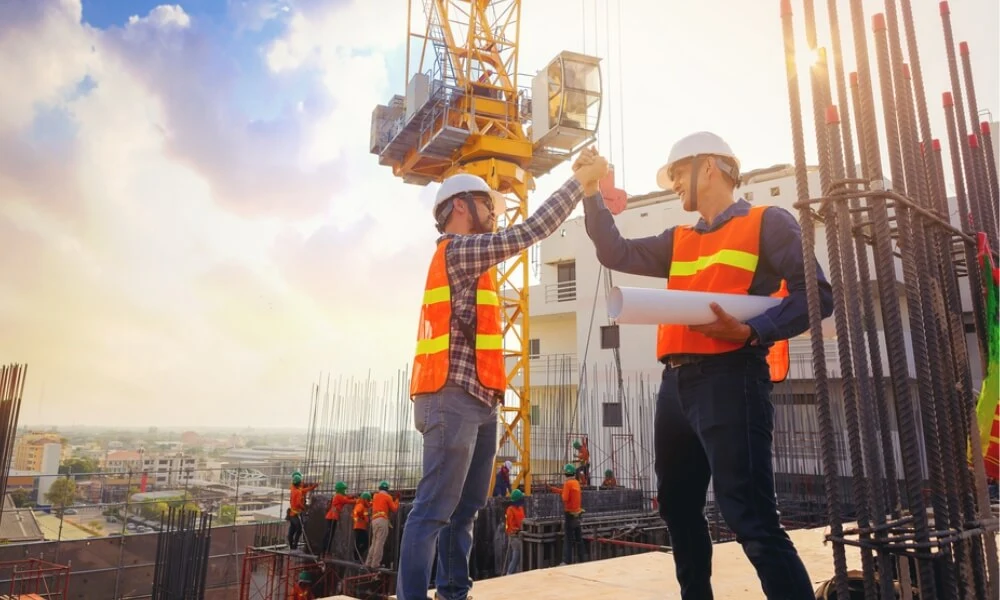Several factors can influence the development of an organization’s health and safety culture. Some of these factors are internal, such as the management team’s attitudes and beliefs about health and safety. Others are external, such as government regulations or the media. In this blog post, we will discuss both internal and external influences on health and safety culture. We will also provide tips for creating your organization’s strong health and safety culture!
An organization’s strong health and safety culture is vital to protect employees, customers, and other stakeholders. A positive health and safety culture can influence an organization in several ways, such as:
- Reducing the number of accidents and injuries that occur;
- Improving communication and cooperation between employees;
- Increasing productivity levels;
- Reducing costs associated with health and safety;
- Improving the organization’s image and reputation.
Several factors can influence the development of an organization’s health and safety culture.
Internal Influences on Health and Safety Culture
There are many influences on health and safety standards; some are positive and others negative. No business, particularly small businesses, is divorced from its suppliers, customers, and neighbors. This section considers the internal influences, including management commitment, production demands, communication, competence, and employee relations.
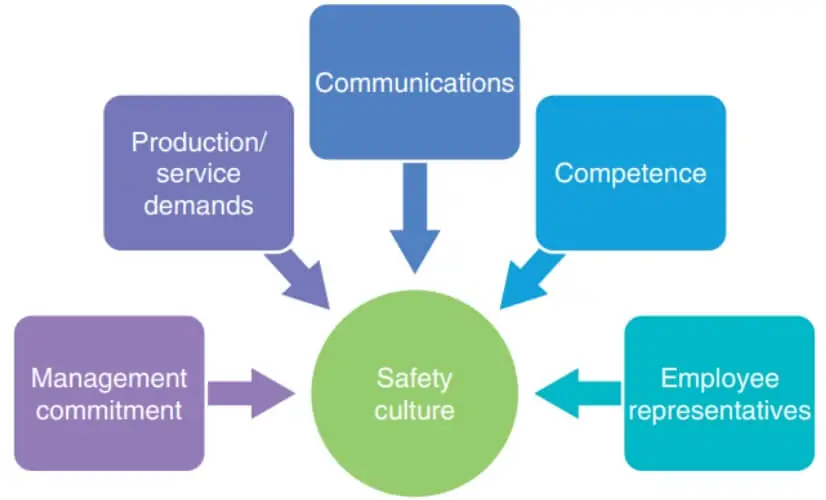
1. Management Commitment
Managers, particularly senior managers, can give powerful messages to the workforce through what they do for health and safety. Managers can achieve the health and safety performance level they want to achieve. Employees soon get a negative message if directors disregard safety rules and ignore written policies to get urgent production to the customer or avoid personal inconvenience. It is what they do that counts, not what they say. Depending on the size and geography of the organization, senior managers should be personally involved in:
- health and safety inspections or audits;
- meetings of the central health and safety or joint consultation committees;
- Involvement in the investigation of accidents, ill health, and incidents. The more serious the incident, the more senior the manager who actively participates in the investigation.
2. Production/service Demands
Managers need to balance the demands placed by customers with the action required to protect the health and safety of their employees. How this is achieved strongly influences the standards adopted by the organization. The delivery driver operating to near-impossible delivery schedules and the manager agreeing to the strident demands of a large customer regardless of the risks to employees involved are typical dilemmas facing workers and managers alike. The only way to deal with these issues is to be well organized and agree with the client/employees ahead of the crisis on how they should be prioritized.
Rules and procedures should be intelligible, sensible, and reasonable. They should be designed to be followed under normal production or service delivery conditions. If following the rules involves very long delays or impossible production schedules, they should be revised rather than ignored by workers and managers alike until it is too late and an accident occurs. Sometimes the safety rules are used in a court of law to defend the company concerned following an accident.
Managers who plan an impossible schedule or ignore a safety rule to achieve production or service demands are responsible for the outcomes. It is acceptable to balance the cost of the action against the level of risk being addressed, but it is never acceptable to ignore safety rules or standards to get the work done. Courts are not impressed by managers who put profit considerations ahead of safety requirements.
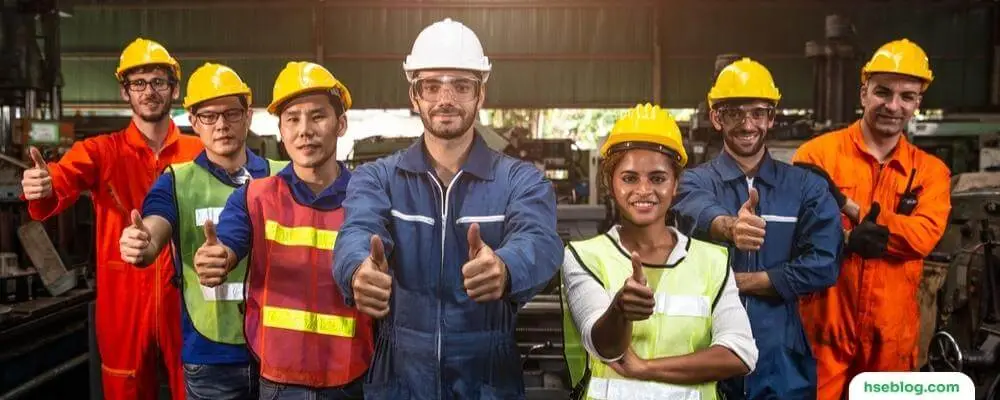
3. Communication
Communications are covered in-depth and clearly will significantly influence health and safety issues. This will include:
- poorly communicated procedures that will not be understood or followed;
- poor verbal communication, which will be misunderstood and will demonstrate a lack of interest by senior managers;
- missing or incorrect signs which may cause accidents rather than prevent them;
- Managers nervous about face-to-face discussions with the workforce on health and safety issues will have a negative effect.
Managers and supervisors should plan to have regular discussions to learn about the problems employees face and discuss possible solutions. Some meetings, like that of the safety committee, are specifically planned for safety matters, but this should be reinforced by discussing health and safety issues at all routine management meetings. Regular one-to-one talks should also occur in the workplace, preferably on a planned theme or safety topic, to get specific messages and employee feedback.
4. Competence
Competent people, who know what they are doing and have the necessary skills to do the task correctly and safely, will make the organization effective. Competence can be bought through recruitment or consultancy, but it is often more effective to develop it among employees. It demonstrates a commitment to health and safety and a sense of security for the workforce. The loyalty that it creates in the workforce can significantly benefit safety standards. Earlier in this chapter, there is more detail on achieving competence.
5. Employee Representation
An enthusiastic, competent employee safety representative can contribute to good health and safety standards, given the resources and freedom to fulfill their function effectively. They can provide the essential bridge between managers and employees. If consulted, people are more willing to accept some precautions’ restrictions and feel involved directly in small workforces or through their safety representatives.
External Influences on Health and Safety Culture
External organizations’ roles are set out here, i.e., societal expectations, legislation, and enforcement, insurance companies, trade unions, economics, and commercial stakeholders.
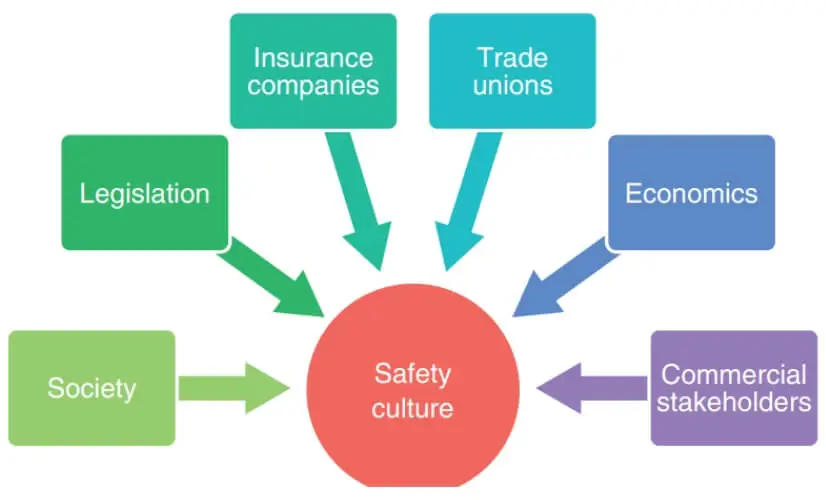
1. Societal Expectations
Societal expectations are not static and tend to rise over time, particularly in a wealthy nation like the UK. For example, the safety standards accepted in a motor car 50 years ago would be inadequate at the beginning of the 21st century. We expect safe, quiet, comfortable cars that do not break down and retain their appearance for thousands of miles. The industry should strive to deliver these same high standards for the health and safety of employees or service providers. The question is whether societal expectations are as great an influence on workplace safety standards as they are on product safety standards. Society can influence standards through:
- People only work for good employers. This is effective in times of low unemployment;
- National and local news media highlighting good and bad employment practices;
- Schools teaching good standards of health and safety;
- The purchase of fashionable and desirable safety equipment, such as trendy crash helmets for mountain bikes;
- Buying products only from responsible companies. The difficulty of defining what is responsible has been partly overcome through ethical investment criteria, but this is possibly not widely enough understood to be a major influence;
- Watching TV and other programs improve safety knowledge and encourages safe behavior from an early age.
2. Legislation and Enforcement
Good comprehensible legislation should have a positive effect on health and safety standards. Taken together, legislation and enforcement can affect standards by:
- Providing a level to which every employer has to conform;
- Insisting on minimum standards, which also enhances people’s ability to operate and perform well;
- Providing a tough, visible threat of getting shut down or a heavy fine; stifling development by being too prescriptive;
- For example, woodworking machines did not develop quickly in the 20th century, partly because the Regulations were so detailed in their requirements that new designs were not feasible;
- Providing well-presented and easily read guidance for specific industries at a reasonable cost or free.
On the other hand, a weak enforcement regime can powerfully negatively affect standards.
3. Insurance companies
Insurance companies can influence health and safety standards mainly through financial incentives. Employers ’ liability insurance is a legal requirement in the UK; therefore, all employers must obtain this coverage. Insurance companies can influence standards through:
- Discounting premiums to those in the safest sectors or best individual companies;
- Insisting on risk reduction improvements to remain insured. This is not very effective where competition for business is fierce;
- Encouraging risk reduction improvements by bundling services into the insurance premium;
- Providing guidance on standards at a reasonable cost or free.
4. Trade Unions
Trade unions can influence standards by:
- Providing training and education for members;
- Providing guidance and advice cheaply or free to members;
- Influencing governments to regulate, enhance enforcement activities, and provide guidance;
- Influencing employers to provide high standards for their members. This is sometimes confused with financial improvements with health and safety getting a lower priority;
- Encouraging members to work for safer employers;
- Helping members get proper compensation for injury and ill health if caused through their work.
Also Read: What’s Behavior Based Safety (BBS)? Process, Training, And Examples
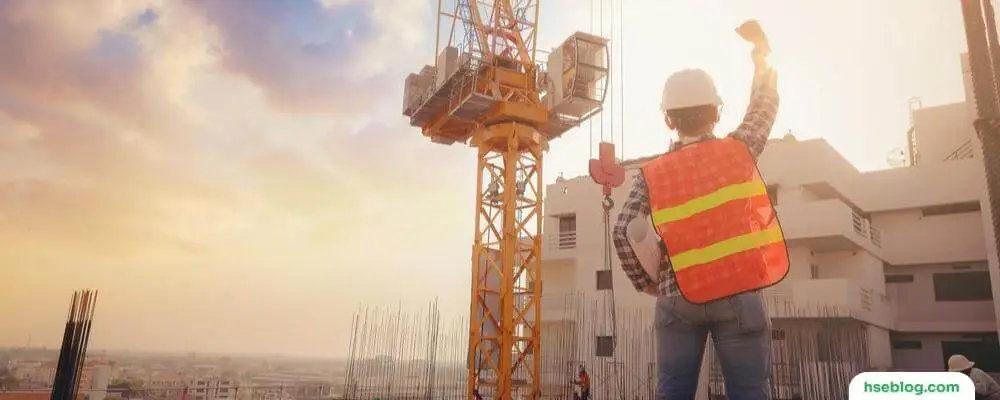
5. Economics
Economics can play a major role in influencing health and safety standards. The following ways are the most common:
- Lack of orders and/or money can cause employers to try to ignore health and safety requirements;
- If employers were aware of accidents and fires’ actual and potential costs, they would be more concerned about prevention. The HSE believes that the ratio between insured and uninsured costs of accidents is between 1:8 and 1:36 (see The Costs of Accidents at Work, HSE Books, HSG96;
- Perversely, activity increases when the economy is booming, and accidents can sharply increase, particularly in the building industry. The pressures to perform and deliver for customers can be safety averse;
- Businesses only managed on short-term performance indicators seldom see the advantage of long-term gains with a happy, safe, and fit workforce.
In both human and financial terms, the cost of accidents and ill health must be visible throughout the organization to encourage all employees to take preventative measures.
6. Commercial Stakeholders
Commercial stakeholders’ influence on standards can do a lot. This includes:
- Insisting on proper arrangements for health and safety management at supplier companies before they tender for work or contracts;
- Checking on suppliers to see if the workplace standards are satisfactory;
- Encouraging ethical investments;
- Considering ethical standards as well as financial when banks provide funding;
- Providing high-quality information for customers;
- Insisting on high standards to obtain detailed planning permission (where this is possible);
- Providing low-cost guidance and advice.
Creating and maintaining a positive health and safety culture in an organization is vital. The internal and external factors discussed significantly shape and influence this culture.
However, establishing such a culture goes beyond simply complying with laws and regulations. It requires an ongoing commitment to safety from all members of an organization. This includes senior management leading by example, clear communication about safety practices and procedures, a culture encouraging employees to raise safety concerns, and an ongoing commitment to training and education.
External influences can also play a significant role. The societal expectations for health and safety in the workplace, the pressure exerted by trade unions, and the incentives or demands from insurance companies can all significantly impact an organization’s health and safety culture. These external factors can drive change, pushing organizations to improve their health and safety practices.
While these factors can individually influence an organization’s health and safety culture, they can also interact in complex ways. For instance, legislation and enforcement can shape societal expectations, and these societal expectations can, in turn, influence legislation. Therefore, organizations must be aware of and actively manage all these factors to create a robust health and safety culture.
Building a robust health and safety culture requires commitment, time, and resources, but the benefits are immense. A strong safety culture reduces accidents and injuries and leads to increased productivity, improved employee morale, and a positive reputation for the organization. It’s an investment that pays off in the long run.

